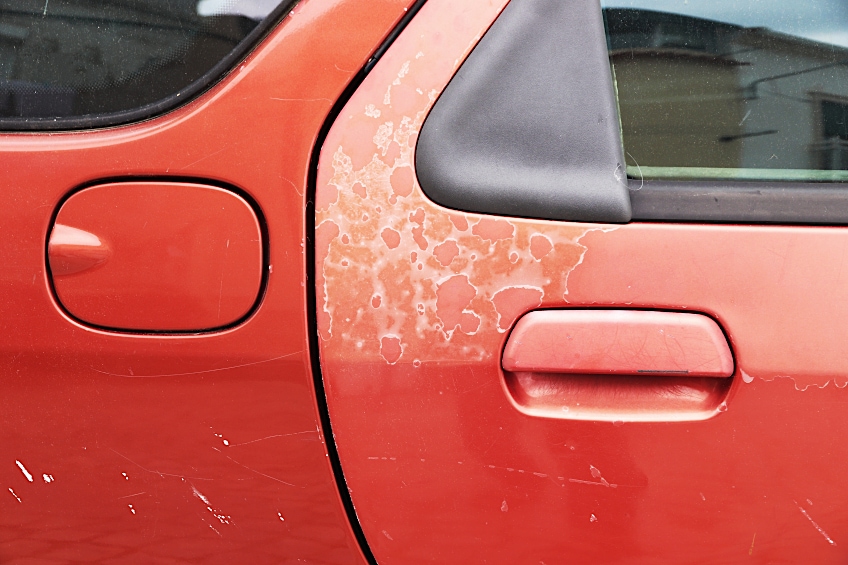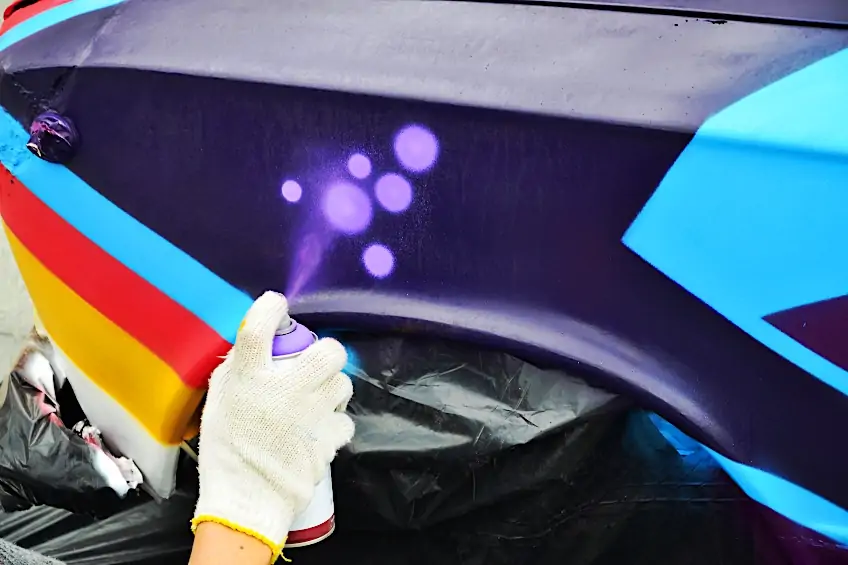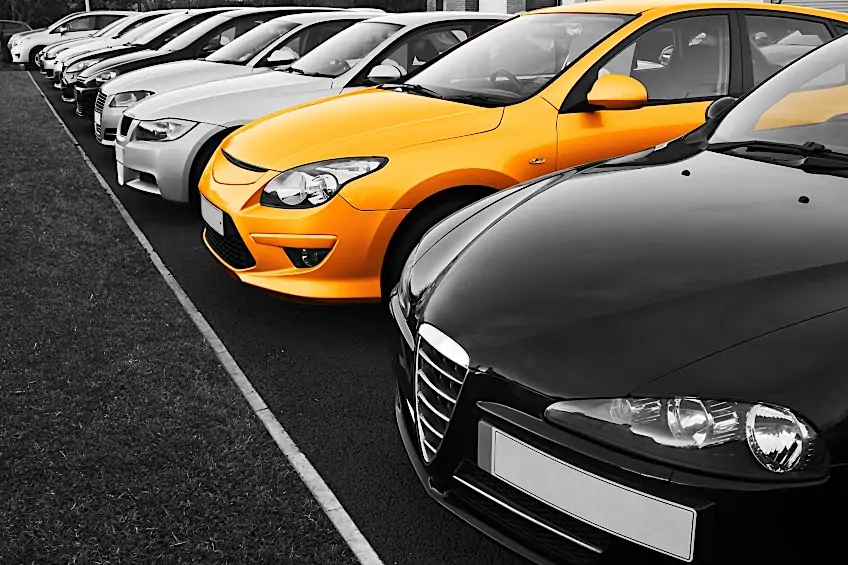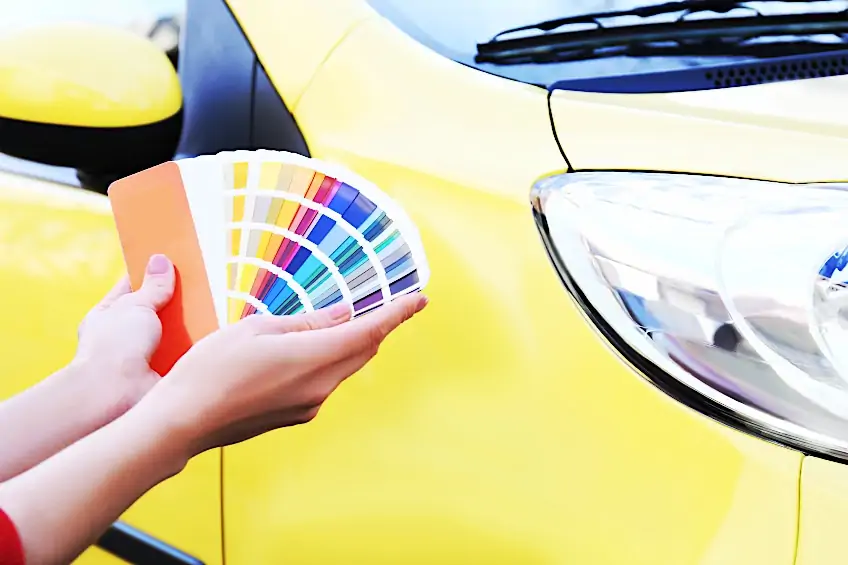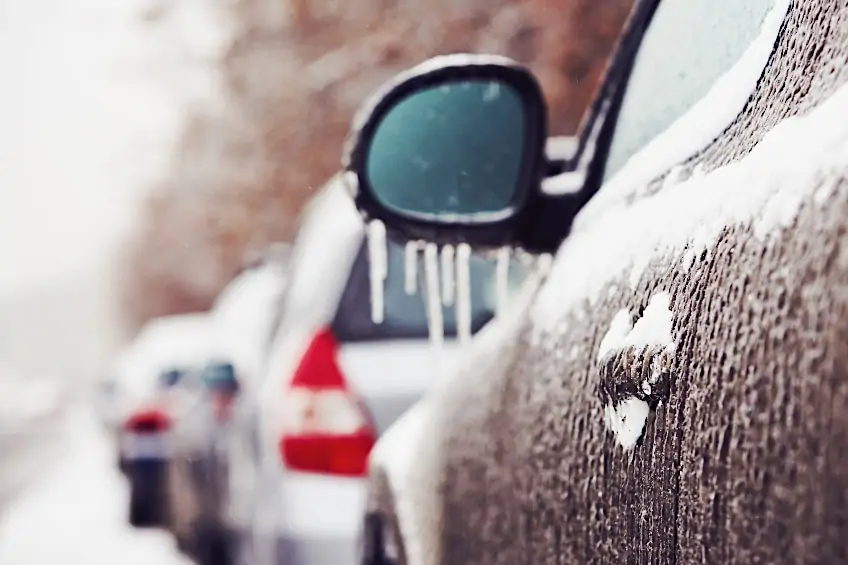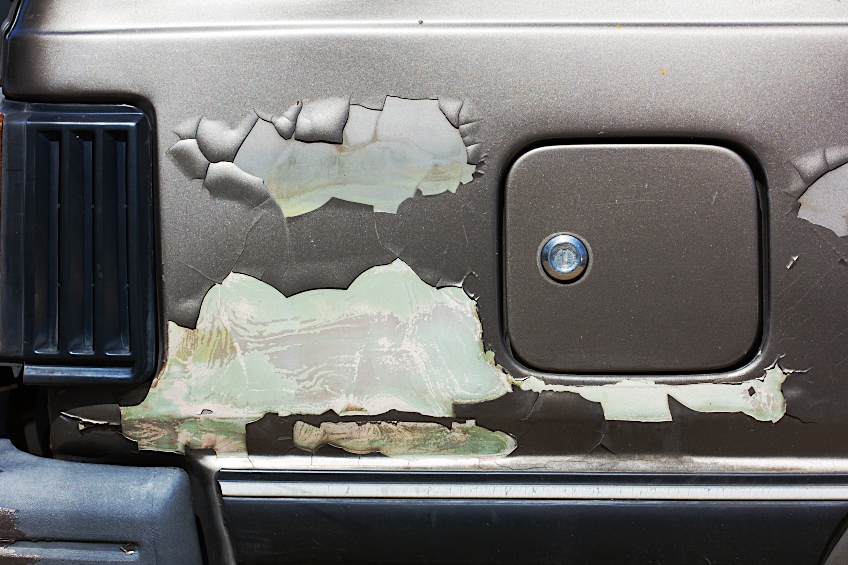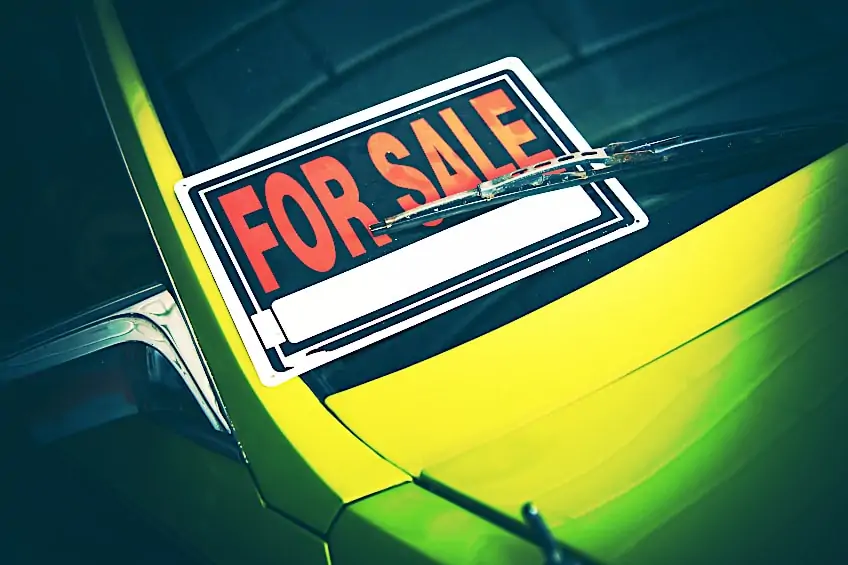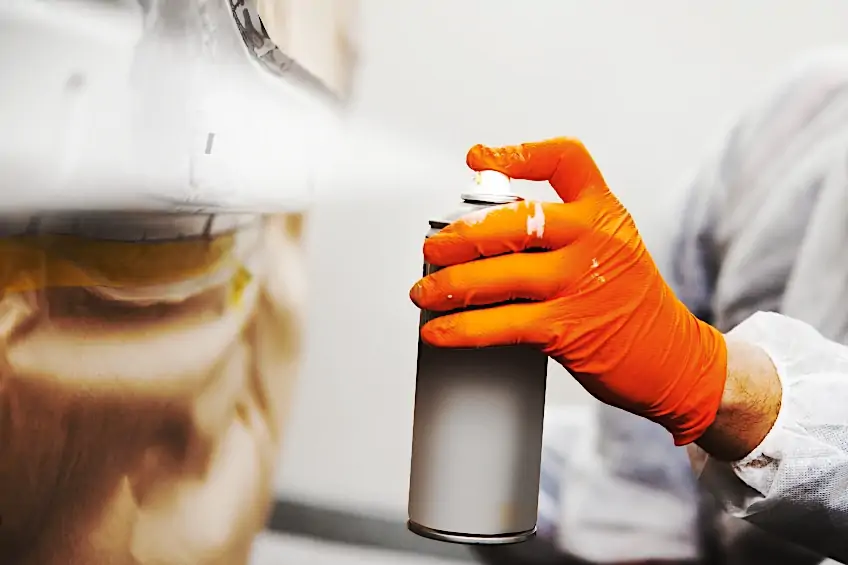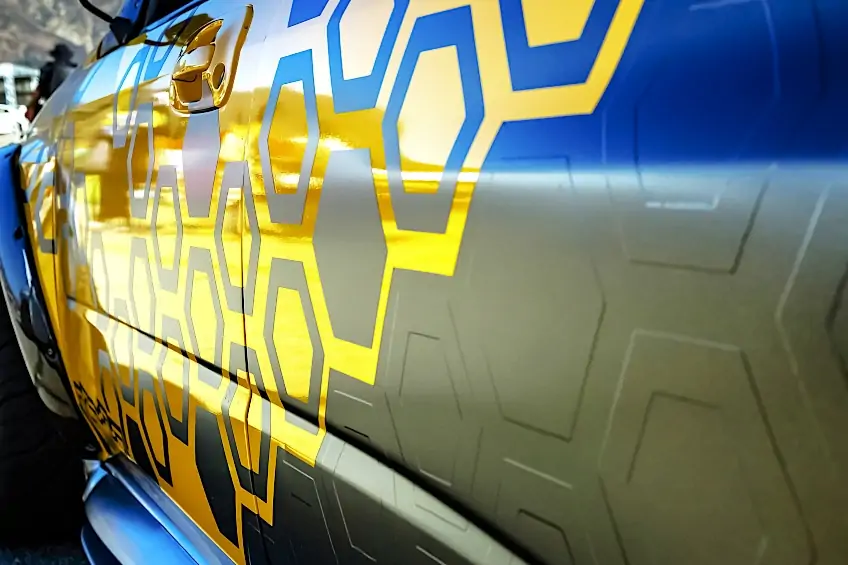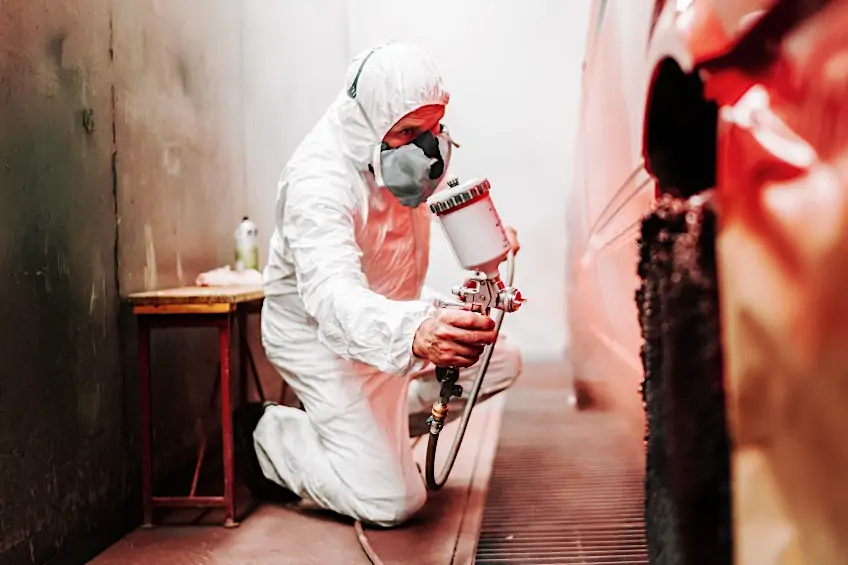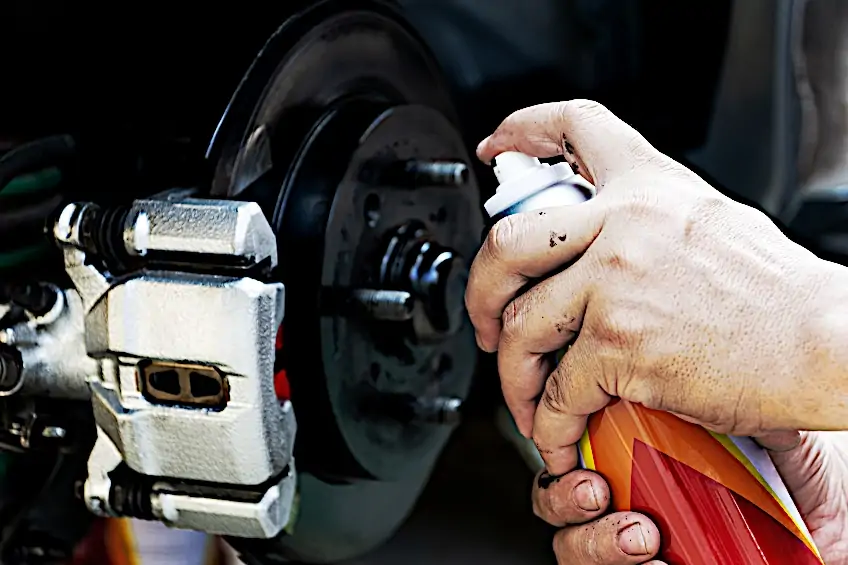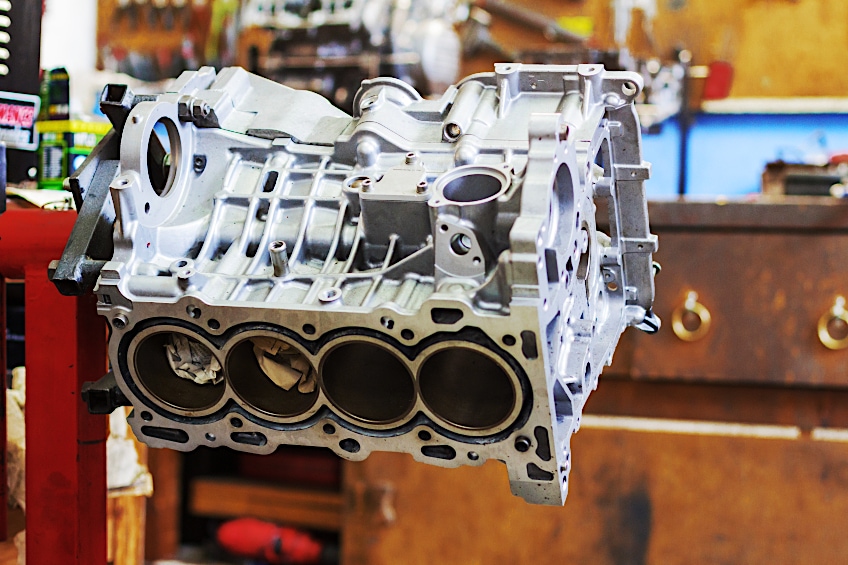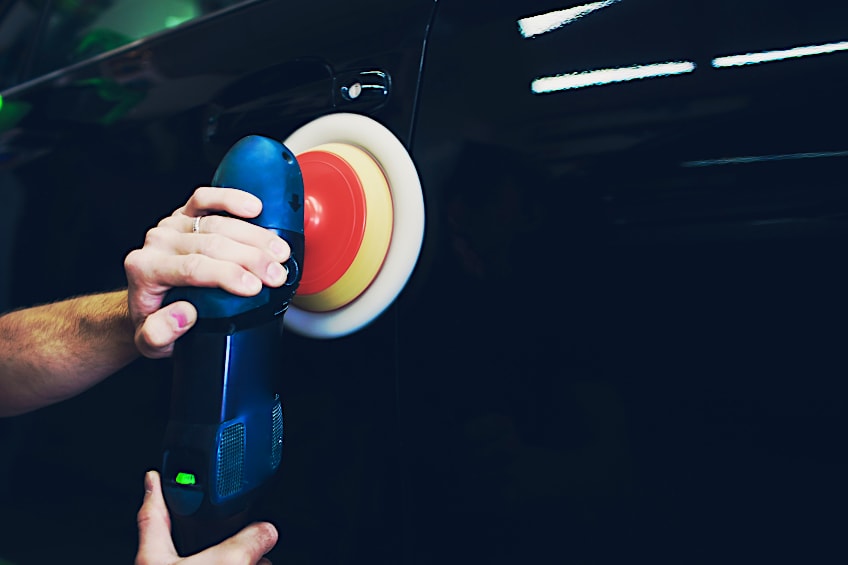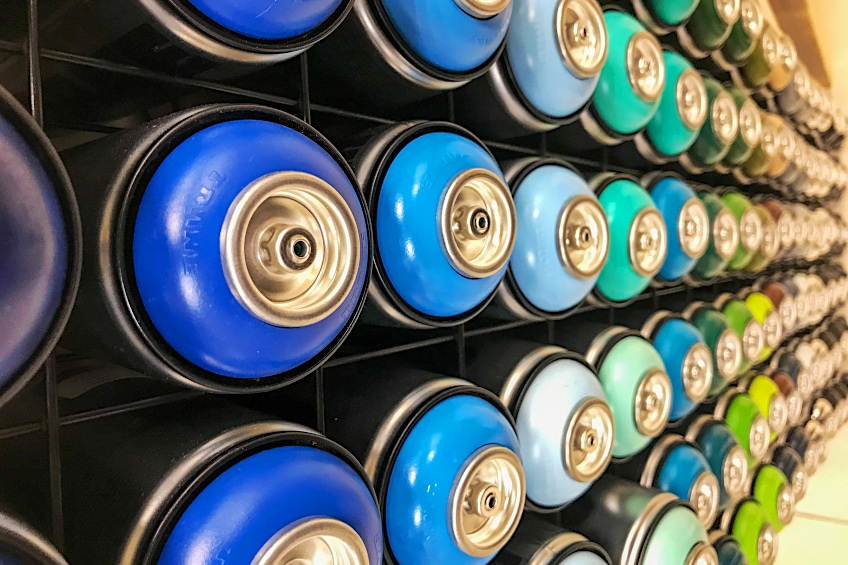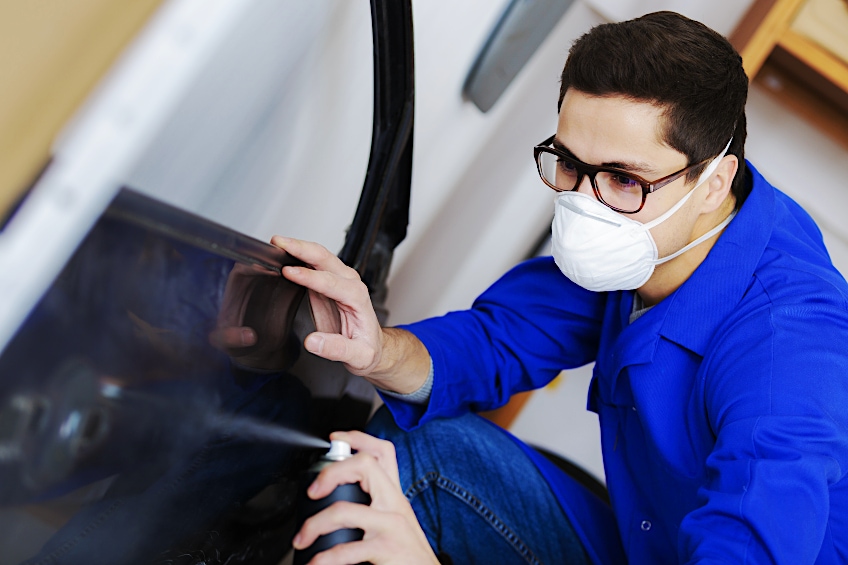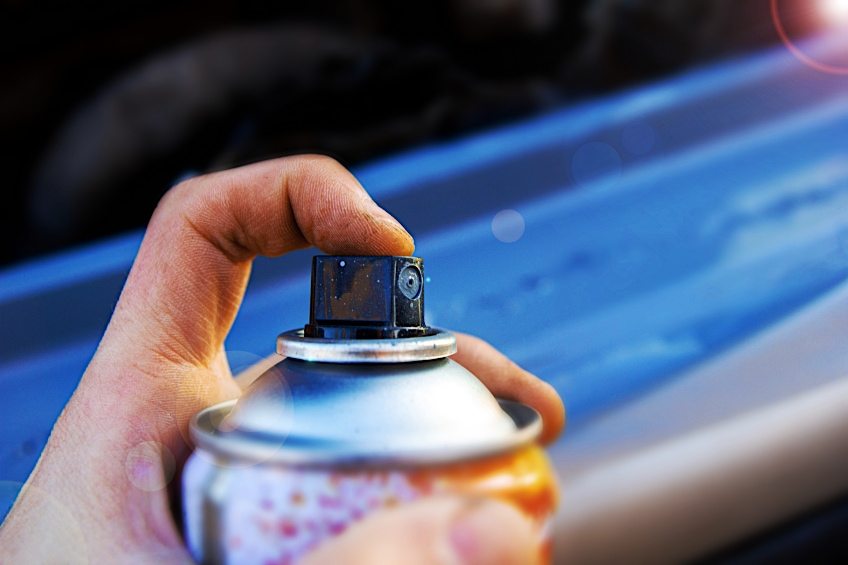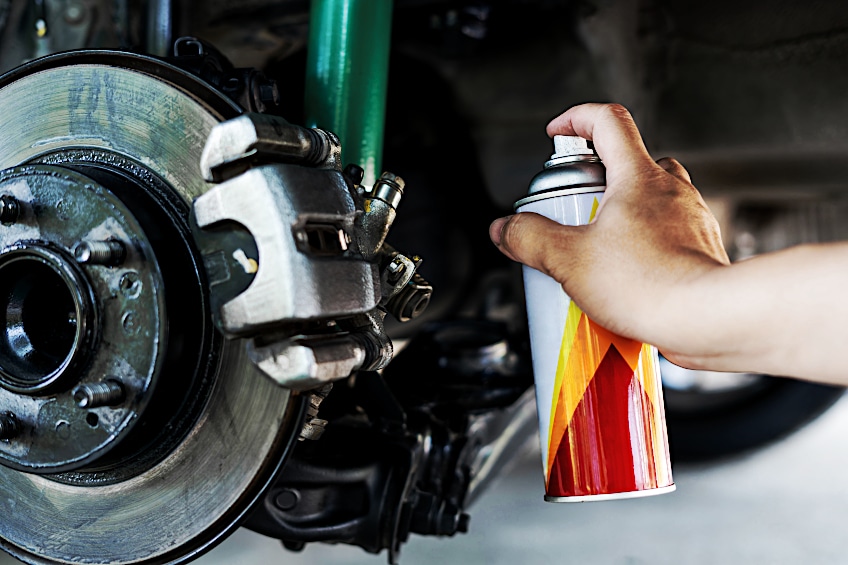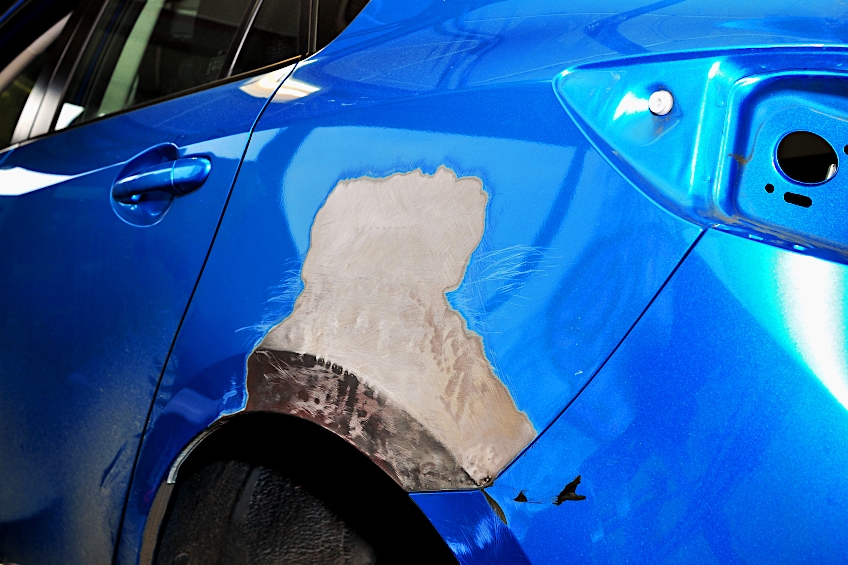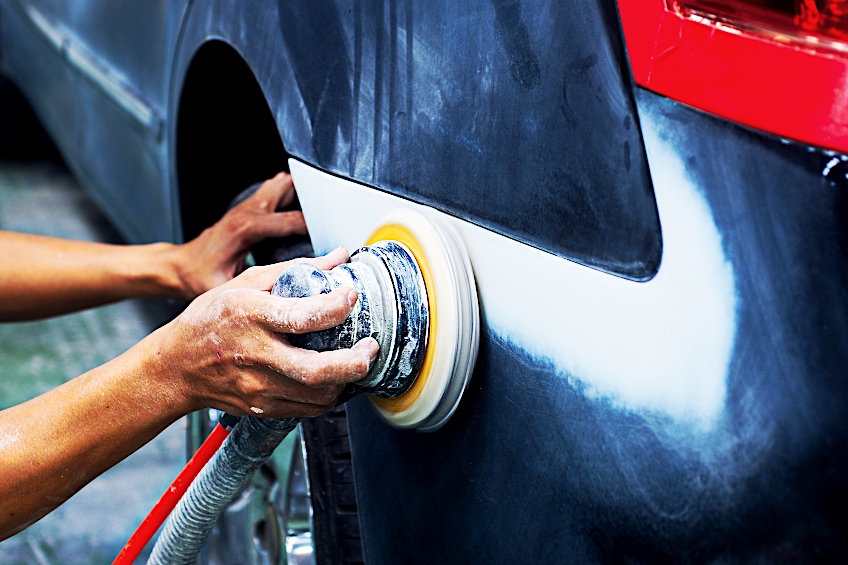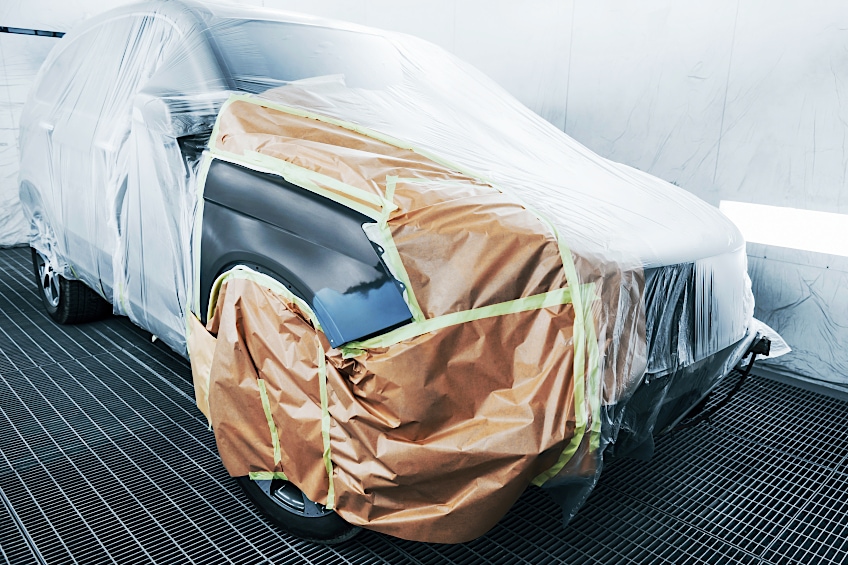Best Spray Paint for Cars – How to Respray Your Car
This post may contain affiliate links. We may earn a small commission from purchases made through them, at no additional cost to you. You help to support resin-expert.com
If you’ve ever found yourself looking at your car and wondering how it went from the pride and joy it was when you first bought it, to the faded, scratched-up shell you see now, you’re not alone. Life tends to get away from us, and we tend to spend more time inside our cars than we do looking at them. This being said, it can be saddening to see your car looking a bit run down, so why not give it a fresh coat of paint? Respraying your car can do a lot more than turn heads as you drive by, so let’s have a look at why respraying your car is a good idea and how to go about it in the best way possible.
Table of Contents
Why Should You Respray Your Car?
Respraying your car can seem like a monumental task, but the truth is that it doesn’t have to be. In fact, with the right preparation, some patience, and the right tools you could pretty much have this done in around a weekend or so.
Tailored Aesthetic and Cost
Back in the day, if you want your car to be resprayed or even detailed you had to fork over sums of money that would make anyone lose some sleep, and so spray-painting cars with aerosol paint was left to teenagers with no money to spend, and a bit too much time on their hands.
Things have changed since then, not that you can’t get your car resprayed by a professional, but aerosol spray paints have evolved to the point where you could do a near-professional job of reconditioning your car or respraying it from scratch all by yourself.
One of the biggest selling-points of respraying your car on your own is that it not only gives you the opportunity to try your hand at spray painting (which can be extraordinarily fun), but it also allows you to save an absolute ton of money by doing the job yourself. Plus, you get to choose the exact color and consistency you want!
Protection from Moisture
Another good reason to respray your four-wheeled chariot is basic maintenance and repair, which is especially important if you live in an area that happened to be particularly humid, if your car parks outside often, or if you live close to a body of saltwater like a beachfront or a saltwater lake.
Why? Well, moisture and saltwater vapor can cause the clear coat and paint coat to degrade and oxidize over time, which means that your car’s bare metal will be exposed to the atmosphere, which will result in surface rust.
Surface rust is relatively easy to treat and remove. However, if left unattended, rust can spread deeper into your car’s panels and chassis, resulting in structural damage, and rendering your vehicle unsafe for driving.
Protection from Heat
The possibility of moisture damage is not the only thing you should be worried about when considering respraying your car though, excessive exposure to heat can cause paint to fade, degrade, and bubble over time, which also makes your vehicle vulnerable to oxidization and heat management issues.
Remember that the paint on your car isn’t just there to make it look pretty. Paint mitigates forces like heat, moisture, and warpage which can affect your vehicle’s electronics and other components too.
Resale and/or Trade-In Value
Finally, the reason that most car enthusiasts respray their vehicles is to maintain or increase the resale or trade value. That’s right, it’s not just the condition of the engine, transmission, and suspension that’s taken into account when you sell or trade your vehicle in for a new one.
The aesthetic appeal of your vehicle impacts on its worth, which is understandable, considering that most of us would pick a car that looks good over one that could use a good spray job. Damaged and faded paint can also suggest that things are less than pristine under the bonnet as well.
What Type of Spray Paint Works on Cars?
Knowing what paint to use on your vehicle is half the battle but having too many options can be frustrating. If you don’t know what type of paint to use on your vehicle, we have prepared a short list for you to look at. Remember that each paint comes with its own advantages and disadvantages, therefore the best option is always the one that will suit your particular needs.
Water-Based Automotive Paint
Although water-based paints have seen a rise in popularity in recent years they are not always the most effective paint to use when spraying a vehicle. Why? Well, water-based paints used for this application aren’t like the variety you’d find and your local store, they are specially formulated to be hard-wearing and need to be mixed together correctly or they won’t adhere correctly.
Secondly, when applying water-based paint to automotive-grade steel or aluminum, you need to ensure that you use a primer and lacquer that prevents the paint from degrading and ensures that it adheres correctly. Compared to when they were first introduced, water-based paints have come a long way but aerosol water-based paints for cars still leave a lot to be desired, and this is why they are generally avoided by professionals and DIY enthusiasts.
Nitro-Cellulose Automotive Paint
Do you own a classic car? Perhaps you were lucky enough to snatch up an old Porsche at a local auction, or maybe you have some good old American muscle nestled away in your garage. Have they seen better days?
Or are you just itching to get them back to their former glory? If this sounds like you, there are millions of people around the world that want the exact same thing, and one of the best ways to go about it is with some nitro-cellulose automotive paint.
What is this stuff? Well, this type of paint is one of the most effective means of restoring, touching up, or completely re-surfacing vehicles from any walk of life. What makes this paint so special is that it provides a sheen “from the factory” which can make you feel like you’re literally staring back in time.
Nitro-cellulose paint is a wonderful tool, but it is extremely toxic and cannot be applied without the use of a full-body protection suit. Additionally, while this type of paint is available in aerosol form, it comes nowhere near the volumes you would need to spray an entire car. The spray paints that are available are intended for use with musical instruments, which means it probably won’t look the best on your car.
Acrylic Enamel Automotive Paint
Automotive paint spraying can get a bit confusing, but there are only certain types of paint that both work on cars and are readily available in an aerosol can form. This being said, it would be challenging to talk about automotive paint spraying without mentioning acrylic enamel paints.
Whether you’re a teenager with your first car or a seasoned veteran in DIY paint spraying, the chances are that you’ll end up with this spray paint in your hand. Why? Well, it’s one of the most popular types of spray paint in the automotive industry and is one of the most affordable aerosol can-based spray on the market.
When correctly applied, this type of paint forms a strong bond with the surface of your workpiece and will last five to ten years longer than other spray paints in its price range, which is nothing but good news for you. Another benefit is its durability, as heat-treated acrylic enamel paint cures far harder than conventional acrylics.
It should come as no surprise that many automotive engineers use this type of spray paint directly on engine blocks. This is because heat and enamel tend to go hand in hand, with enamel particles soaking up and redistributing heat better than most other materials available.
Acrylic Urethane Automotive Paint
If you’re really looking to spend some money on your paint job and you have the time to do it yourself, why not opt for acrylic urethane paint? Although it is definitely one of the most expensive types of automotive paint in the market today, the quality of its finish and the sheer durability of this paint makes it the premium choice when selecting an aerosol spray paint for your restoration.
This being said, acrylic urethane paints can be tricky to work with as there are components that need to be added to them to achieve the right viscosity for your paint job. If you’re willing to put in the work and prepare your workpiece for this type of paint you will be pleasantly surprised by the aesthetic result, not to mention the longevity of the finish.
Truth be told, most (not all) urethane paint finishes will outlast any other type of paint finish, and since it rarely chips, is abrasion and impact-resistant, you can park your car anywhere with the confidence that should it be scratched or dented, the damage will buff right out.
Finally, the party trick of this type of paint is the fact that it requires absolutely no clear coat once it has been applied, acrylic urethane paint is inherently glossy and will provide your car with a sheen finish once it has been applied.
| Type Of Paint | Available In Aerosol Can Form | Water/Moisture Resistant | Impact-Resistant | Gloss/Sheen Finish |
| Water-Based | ✔ | ✔ | ✘ | ✔ |
| Nitro-Cellulose | ✘ | ✔ | ✔ | ✔ |
| Acrylic-Enamel | ✔ | ✔ | ✔ | ✔ |
| Acrylic Automotive | ✘ | ✔ | ✔ | ✔ |
What is the Best Spray Paint for Cars?
Now that you have had a look at which types of spray paint are graded for use with cars, let’s have a look at some brands we think make the best spray paint for cars. Remember, paint choice is purely subjective, and you should always consider which conditions your car will be exposed to most when choosing one. This being said, here are three spray paints we think do a pretty good job, whether you’re on a budget or have some money burning a hole in your pocket.
Best Overall: POR-15 Gloss Black Topcoat Spray Paint
The automotive aerosol spray paint market is pretty small due to most people preferring to spray their cars and bikes by means of a paint sprayer. This means that competition can be fierce between brands that offer such products, and nowhere is that better illustrated than with the POR-15 brand.
When there are only a handful of players in the market you have to remain competitive or risk being muscled out of that particular market, and we think that the team from POR-15 has done an incredible job of maintaining the top stop thus far.
This is arguably the best automotive spray paint in a can that not only does the job aesthetically but protects the surfaces it has been applied to from further damage. What makes this paint unique is that it can be used to touch up damaged areas or it can be applied directly to raw metal for your vehicle’s first-ever coat.
Not only does PR-15 claim that their product will protect your metal from oxidation, but that it can be applied directly to the metal of your vehicle without the need for primer or clear coat, which saves you quite a bit of time in the preparation process.
What’s more is that the self-priming formula is UV resistant, abrasion-resistant, and water-resistant, which pretty much leaves nothing to be desired. All this quality, durability, and convenience does come at a steep cost though and considering that this formula is available in limited volumes, you might find buying more than a few cans if intended to spay all your panels.
This being said, you definitely get what you pay for, the PR-15 team has certainly made a name for themselves and their product by offering what is arguably the best automotive spray paint in a can that money can buy.
- Direct-to-metal aerosol paint creates a permanent corrosion barrier
- Protective moisture-shedding formula with long-term color retention
- Direct to metal or previously painted surfaces, no primer required
- Versatile
- Durable finish
- Easy to use
- Self-priming formula
- Requires no clear coat
- UV-resistant
- Prevents oxidation
- Expensive
- Only available in one color
- Only sold in one volume
- Full cure time exceeds 24 hours
Best Finish: DUPLI-COLOR Trim and Bumper Spray Paint-Black
As technology evolves, we tend to shift away from certain materials and as a result, we make our things out of different materials. This being said, the number of cars made of composite materials, monocoque chassis, and even space-age materials has increased dramatically.
It makes complete sense to shift away from paints that are designed for cars that were built like tanks to ones that are more conducive to materials that are more prevalent these days. A good example of this is bumper spray from the Dupli-Color team, which offers an impressive range of sprays for your car’s impact zones.
Bumpers and rims are some of the most damaged parts on any vehicle. This should come as no surprise, given that they are the lowest points on any car and consequently, first in line for any debris kicked up from the road.
Even though this is exactly what they’re made for, it can be a bit of an eyesore to look at a scratched or dented bumper, and since most of them are no longer made of chromed metal. You will need a plastic spray like the Dupli-Color bumper spray to either spot treat or repair them.
The Dupli-Color team has designed this formula to dry completely in 30 minutes with a full cure time of one hour, which means you would have to wait a day while you watch your bumper dry. The can itself is impressive, featuring an EZ spray nozzle that allows you to release the spray with virtually no pressure at all.
This coupled with an even spray orifice ensures that every time you hit the button, you get the perfect spray distribution on your workpiece. This spray paint is extremely flammable though, so we don’t recommend using it around any open flames or inside the engine bay of your vehicle as a precautionary measure.
- Renews and protects thermoplastics and polyurethane bumpers
- Solid uniform color with superior paint adhesion
- Touch-dry in 30 minutes, can be handled in 1 hour
- Versatile
- Easy to use
- EZ spray technology
- Even spray nozzle
- Scratch-resistant
- Impact-resistant
- Fast dry time
- Fast cure time
- Highly flammable
- Only available in three colors
- Only works on plastics
- Available in limited volume
- Cannot be used for spot repair or color matching
Best Value: PERFORMIX Plasti-Dip Black Multi-Purpose Rubber Coating
So far, we’ve had a look at specialty paints for particular surfaces like metal and plastic. Sometimes what you need is a universal tool, a “one size fits all” product that gets the job done and gets the job done well. If this is what you’re looking for, the Performix team has heard your calls and has gifted us the matt black plasti-dip solution for all your automotive spray paint needs.
What does this mean? Well, plasti-dip solutions have become really popular in recent years due to their inherent ability to protect and insulate a number of vehicle surfaces, they can even be added over an existing paint job similar to a vinyl wrap and be removed at a future point.
Plasti-dip Is unique as it provides a protective rubberized layer that is available in a variety of colors. This rubberized layer can protect the surface of your vehicle from excessive heat, UV damage, moisture, and even unexpected electrical discharge.
These particular plasti-dip products from the Performix team come in matt black which is the perfect color for repairing damage to interior plastics, bumpers, or entire panels on your vehicle. This paint can also be applied with a brush via an aerosol can, so you have the option of simply filling a container and dipping your workpiece into the mixture.
This paint is also extremely flexible if applied in excess, which is great if you need to make a surface extra soft or if a particular workpiece needs some cushioning. This stuff does tend to get around quite easily though, so do your best to cover up any surfaces you don’t want to get any paint on. At the end of the day, this is what most people want out of spray paint, a good finish that can be removed at any time if the mood takes them and if it happens to protect your car in more than one way too, is there really any downside?
- Protects against moisture, corrosion, electrical shock, and vibration
- Flexible, non-slip, controlled grip that will not crack or become brittle
- Can be removed to reveal original surface without causing damage
- Versatile
- Easy to use
- Removable coating
- Protects against impact and abrasion
- Insulates surfaces from heat and electricity
- Protects against UV damage
- Multiple options for application
- Can be as flexible, rigid, or brittle as required
- Only available in one color
- No ergonomic grip on can
- Only available in 11-ounce volume
- Needs to be replaced every three years
What to Consider when Buying a Spray Paint
What should you consider when buying spray paint for your car? There are thousands of choices and brands that all claim to have the best car spray paint, but they might not have what you’re looking for. Here are a few things you should consider when choosing to spray paint for your car and why they matter.
Finish
When it comes down to it, the factor that will sway your mind the most when it comes to selecting a spray paint for your car is the finish the paint provides. Most finishes available in the aerosol automotive spray paint market are either gloss, matt, or something in between.
It’s very rare to find light-sensitive tints or color flipping paints when shopping around for aerosol spray paints, but this doesn’t mean they don’t exist, although you should keep in mind that they are few and far between and likely pretty steep in price.
Quality
A characteristic that should be at the forefront of your mind when selecting spray paint for your car is the quality of the paint. Paint quality ensures good adhesion and resistance to damage caused by impact, abrasion, moisture, or excessive exposure to heat.
Keep in mind that paint quality can vary considerably from brand to brand, and it will be in your best interest to check product reviews and tutorials to ensure that you are getting a good quality product.
Keep an eye out for newer brands that claim to have the best car spray paint or a spray paint that works on any surface, they could be using inferior base materials in their paints or simply trying to scam unsuspecting consumers to make a quick buck.
Versatility
Versatility is always seen as a good thing when painting surfaces, and why wouldn’t it? A paint that you can use on multiple surfaces saves you time, money, and effort in an exercise that can be extremely labor-intensive, especially on larger workpieces.
This being said, we have covered some multi-purpose spray paints earlier in this piece which are good examples of what a versatile automotive paint should work like. However, not all brands will possess the same finish or adhesion quality across all the surfaces they claim their paint is graded for, which is why most professionals prefer using a dedicated automotive paint. The risk of using a universal paint is high, and it can be an expensive mistake to correct.
Price
Like most things in life, this is what most of our choices come down to. Even if the best automotive spray can paint in the world was staring you in the face, it would make no difference if you couldn’t afford it. High-priced paints more often than not prove to be worth the cost, but they might not always be a justified purchase.
For instance, if you are simply touching up some spots on your, or respraying some interior plastics, you could consider going with something slightly cheaper as these areas of the vehicle aren’t exactly the focal point most eyes fall on. On the other hand, some products can be slightly overpriced for the quality, versatility, and finish they offer. Therefore, it’s important to shop around and compare prices, especially if you’re working within a certain price range.
How to Spray Paint Your Car with Automotive Spray Can Paint
Nervous? Don’t be. Unless you intend on respraying your entire car with aerosol paint you have nothing to worry about. Touching up your vehicle with spray paint is relatively straightforward and can be a lot of fun. All you need to do is prepare yourself, your workspace, and your workpiece correctly, and the spray painting will take care of itself. Here are a few steps you can follow to ensure that all goes smoothly.
Prepare Your Surface
Preparing the surface you will be spray painting is the most crucial part when spraying vehicle surfaces. This ensures that the finish and adhesion of the paint you are using will work as intended while ensuring that any areas you are trying to blend won’t stand out once the fresh paint has dried completely. Start by sanding away the existing paint (or what’s left of it) with some fine-grit sandpaper, this should be between 600 to 1500 grit sandpaper to get the best results.
The goal is to get down to the bare metal of the surface without scratching it up too much. We don’t recommend using a power sander for this exercise if you don’t have much experience using one.
Once your surface has been sanded, ensure that the spot you will be spraying is clear of any debris and that you have filled any existing holes in the panel with body filler. Allow the filler to dry for the manufacturer’s recommended time period and sand the area once again to ensure it is completely flush before moving on to the next step in the process.
Isolate and Prime Your Work Area
Once you have filled any holes in your work area and sanded away any existing surface coating it’s time for you to mark and isolate the area you will be spraying. This is best done with some paper and painter’s tape, simply isolate the area by adhering to the paper and painter’s tape around it, this will ensure that only the area you want to paint will be painted.
It is essential to isolate the area you plan on painting. The last thing you want is to have to figure out how to get paint off parts of your car that are still perfectly fine. Once your work area has been secured, give it a once-over with a clean cloth before priming your workpiece. This step isn’t necessary if you have self-priming paint, but if you don’t, ensure that you are working in a well-ventilated area.
The goal here is to apply at least three coats of primer, you have the choice of opting to sand your surface in between coats but this is entirely up to you. Allow the primer to dry between coats for the manufacturer’s recommended time period and ensure that you are wearing the appropriate personal protective gear like a mask and gloves throughout the process.
Spray Your Surface
Once your workpiece has been primed, wipe it down with some soapy water before you get to spraying. Allow your workpiece to dry adequately and get your spray can ready, simply shake it up and allow it to settle for a minute before you get going.
Ensure that you maintain a good spraying distance. Holding the can too close to the surface can cause the paint to pool, run, and bubble. Start by applying minimal pressure to the spray button. Using your wrist, spray from one side to the other in a smooth, uninterrupted motion, to ensure a uniform application.
Once you have the hang of it and your work area has been covered adequately, allow the coat to dry as recommended by the manufacturer. Apply as many coats as you feel is required, but three is usually the best when dealing with most panels. Once your final coat has been allowed to dry, apply a clear coat graded for automotive surfaces and your workpiece should look as good as new.
Now you know that it’s a good idea to spray paint your car. You have insight into the pros and cons of different types of automotive aerosol spray paints, and which spray paints for cars on the market are the best. You know what to look for in a spray paint, and even how to use aerosol paint effectively on your vehicle. There’s only one thing left to do: it’s time for you to go out there and put your newfound knowledge to the test. Remember to always work in a well-ventilated area and to always wear the appropriate personal protective gear.
Frequently Asked Questions
At what Temperature do Aerosol Cans Explode?
Typically spray cans will explode at 120 degrees, but this is dependent on the contents, as some accelerants may expand far quicker than this. It is always a good idea to keep your aerosol cans, no matter the contents, out of direct sunlight and away from exposed flames.
How Do I Get a Smooth Finish with Spray Paint?
Spray paint can be tricky to work with, especially if you don’t have any prior experience. In order to get a good smooth finish, many professionals advise sanding down each coat of paint slightly between layers so that the distinction between these layers is lessened. This gives a smooth seamless look to your finish.
How Do You Spray Paint Evenly?
A simple, effective yet little-known trick when it comes to spraying any surface is to spray multiple thin coats. Instead of spraying three medium-density coats, try spraying five to six really thin layers of paint to get a more even-looking finish.


